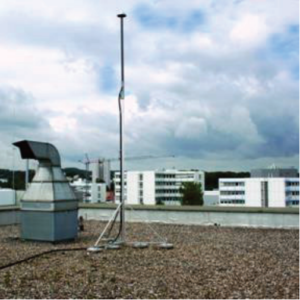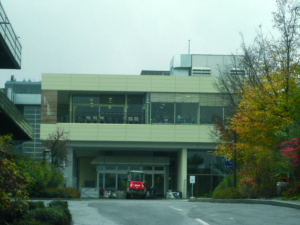When construction is already underway, it is also visually appealing, the Fraunhofer Gesellschaft thought when it came to redesigning the Stuttgart Institute Center. The architecture of modern canteen construction, which is directly in the line of sight of the visitors, is dominated accordingly by large glass surfaces and wood. The problem, however, was that no lightning protection system should be visible on the building, it would have disturbed the overall concept too much. Without further ado, the engineers, in consultation with the client, outsourced the arrester to a higher neighboring building. This was made possible by an innovative lightning protection concept from the USA. The Stuttgart Institute Center (IZS) is the second largest research center of the Fraunhofer Gesellschaft in Germany. Six institutes are centrally located here, from industrial engineering to building physics and production technology to the technology development group. The newly built canteen of the IZS is the meeting point for researchers from all scientific disciplines. With huge glass surfaces, wooden elements and a wide balcony, it not only offers space for cozy breaks, but also acts as an open and inviting building for visitors to the center. Nothing should disturb this first impression, not even a lightning protection installation on the roof. In addition, there was a problem with the structural design: “Since the building is built on supports, with conventional lightning protection, the discharge line on the outside would have had to be lowered – a potential danger for passers-by,” said Rolf Rogg from the engineering office Schwarz in Stuttgart the electrical planning of the canteen was responsible. In addition, it was not clear in the planning phase whether the old canteen structure over which the new one was being built would not be demolished, which is why the existing necessary arresters and earthing devices could no longer be used and included in the planning.
If only to avoid damage to the building, the canteen had to be protected from lightning. The simple solution of the planners and engineers: The lightning protection for the canteen should come from a neighboring building.




